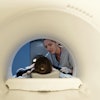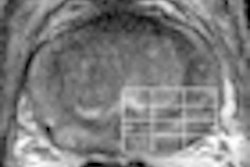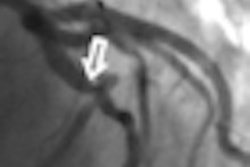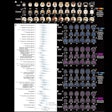The practice of ordering an abdominal x-ray exam for constipated children to assess the presence of retained feces or to confirm a diagnosis made during a physical exam should be stopped, as the procedure is of limited value, according to an analysis published online in Pediatric Radiology.
Pediatric gastroenterologists and radiologists at Wilhelmina Children's Hospital in Utrecht, the Netherlands, conducted a study to determine the accuracy and intra- and interobserver agreement of the Starreveld scoring method in the diagnosis of functional constipation among pediatric patients (Pediatric Radiology, July 1, 2010).
The physicians wanted to determine if the Starreveld scoring system, designed for scoring radiographs of constipated adult patients, might be useful for pediatric patients as well. During this exercise, they also compared the performance of the Starreveld method with the Barr scoring method, the oldest method for evaluating constipation of pediatric patients on plain abdominal radiographs.
Three radiologists and a medical student independently evaluated the abdominal radiographs of 34 children who presented at the outpatient clinic of Rijnstate Hospital in Arnhem with symptoms of constipation. Thirty-four children with symptoms of nonretentive fecal incontinence and functional abdominal pain who also had abdominal radiographs served as the control group. All children were between 7 and 12 years of age, and they received treatment at the clinic between September 2001 and April 2004.
All participants were blinded to the patients' diagnoses and to each other's scoring. One month later, the three radiologists repeated the evaluation.
Both the Starreveld score and the Barr score quantify the amount of feces in the ascending colon, the transverse colon, and the descending colon. The Starreveld score also assesses the rectosigmoid, whereas the Barr score also assesses the rectum.
Using the Starreveld score, 67% of the constipated children were correctly identified; with the Barr score, this percentage was 41%. With the Starreveld and Barr scores, 41% and 59%, respectively, of the control group were incorrectly identified as being constipated.
The mean confidence interval score from all reviewers was 0.54 for the Starreveld score and 0.38 for the Barr score. There was no correlation between accuracy and experience, lead author Fredericus Kokke, MD, a pediatric gastroenterologist, and colleagues reported.
Because the analysis showed a diagnostic accuracy that was only marginally above results that can be obtained by chance, the authors do not recommend that abdominal x-ray exams be part of the routine workup of childhood constipation.
By Cynthia E. Keen
AuntMinnie.com staff writer
August 4, 2010
Related Reading
X-ray's role debated in systematic diagnosis of pediatric constipation, March 17, 2006
Abdominal radiography not useful in constipated children, July 14, 2005
Test predicts ongoing constipation in kids, August 24, 2004
Copyright © 2010 AuntMinnie.com



















